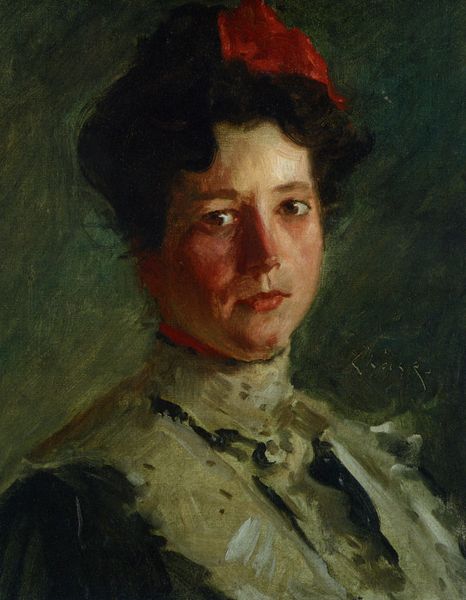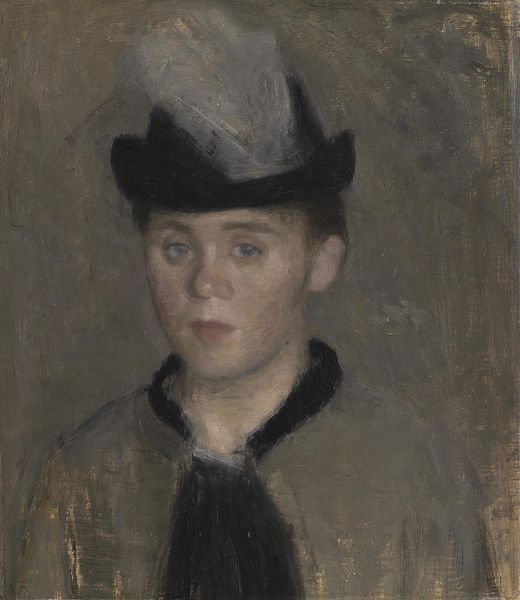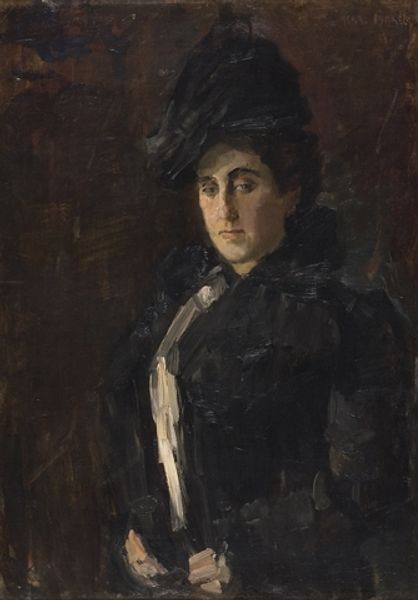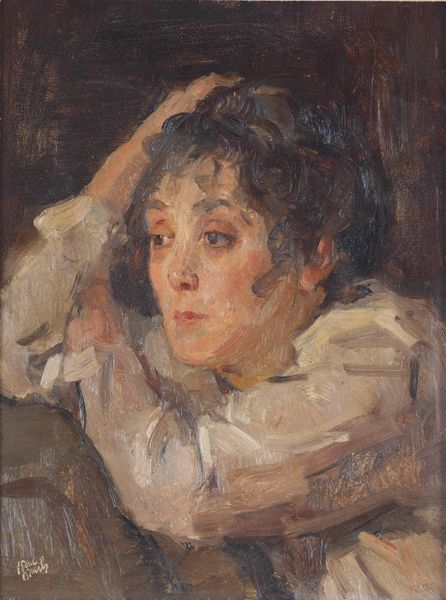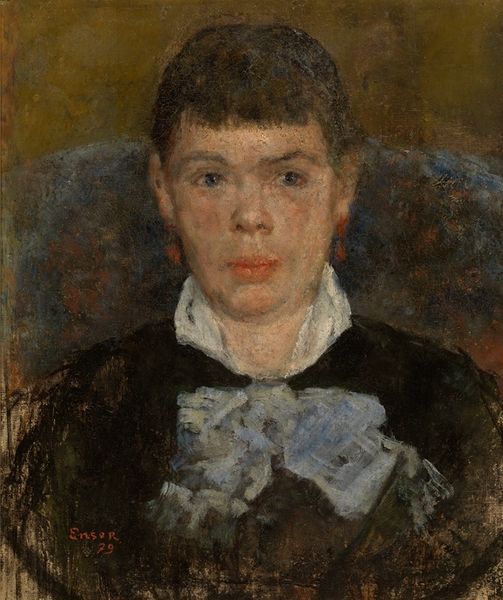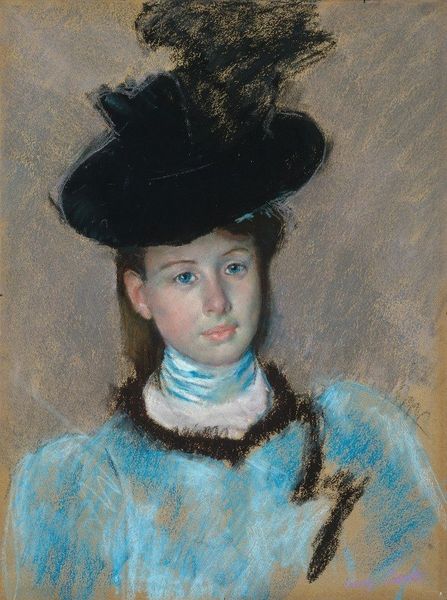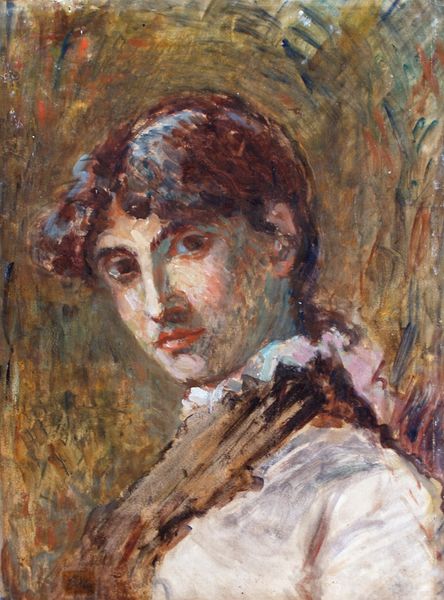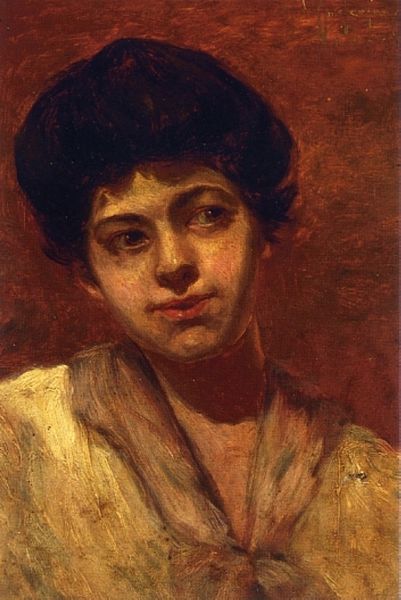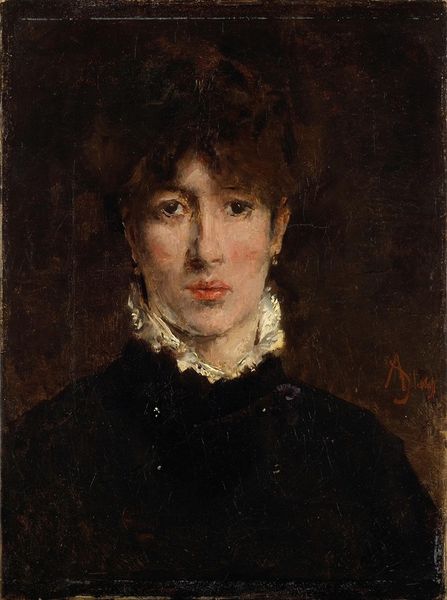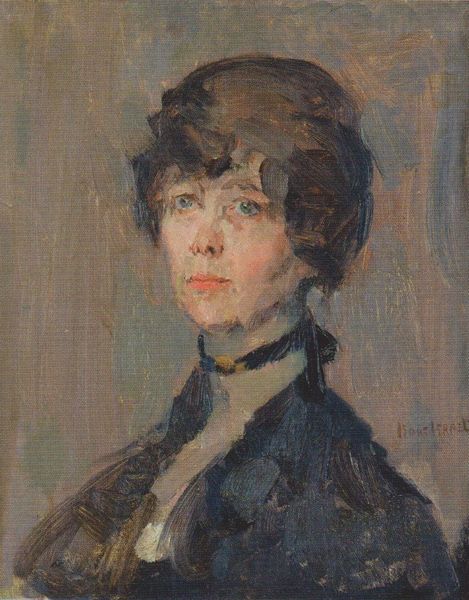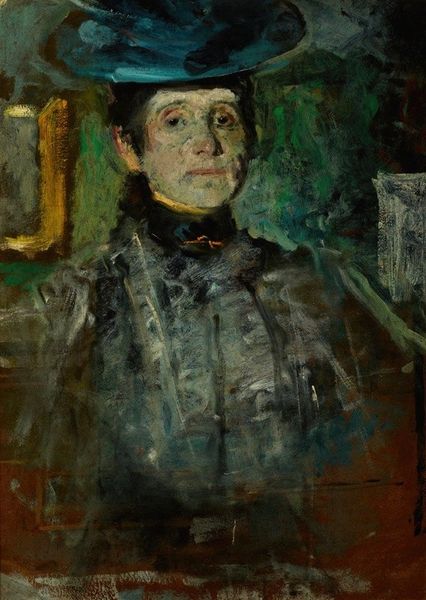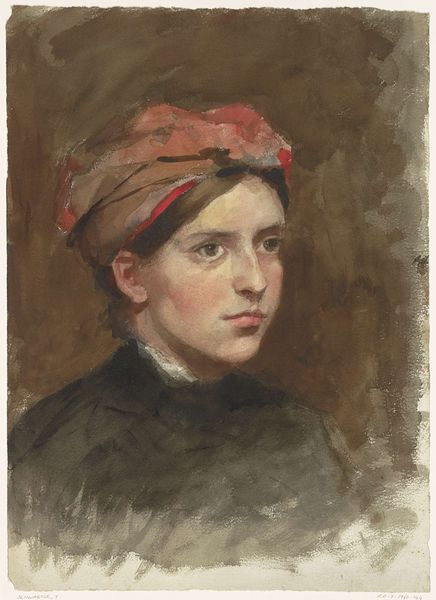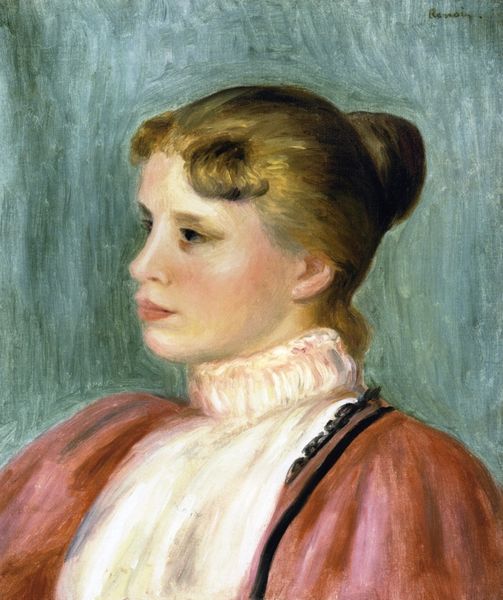
Copyright: Public Domain: Artvee
Curator: Let’s take a look at Jozef Hanula’s oil on canvas, "Head Of A Lady In A Hat," painted around 1895. I’m struck immediately by the artist's manipulation of texture to create an almost palpable sense of the fabrics worn by the sitter. What’s your take, Editor? Editor: Oh, she’s pensive! The tilted gaze and that lovely, melancholic air give her such an aura of interiority. And the brushwork, so loose, it almost feels like a half-remembered dream. That bright red flourish in the hat is a burst of joy against the somber tones, isn't it? Curator: Absolutely, and the red in the hat leads my eye to the raw materials of painting here. How that single brushstroke implies mass production for leisure, consumption of color, fabrics and form. How Hanula brings her into being with visible strokes of pigment tells a story, perhaps subconsciously, about social structure, privilege, and taste in the late 19th century. Editor: I wonder, what was she thinking about? The rapid brushwork invites us to project our own narratives, to see ourselves reflected in that shadowed glance. The darkness around her emphasizes how very "present" and lit-up she appears. A bold attempt by Hanula. Curator: Considering the historical context, the rapid industrialization, we also should mention here how Impressionism began to highlight the commodification of leisure, and portraiture captured the rising middle class's aspiration for cultural recognition. The "how" and "why" are just as intriguing as the "who." Editor: And there she lingers, a delicate tension between being present and a nostalgic glance backward, the world always shifting... like paint on the canvas. A lovely example, don't you think? Curator: Agreed, this work and its moment within that history encourage me to contemplate not just what art represents, but also the societal conditions and forces that allow it to exist and for whom that creation mattered.
Comments
No comments
Be the first to comment and join the conversation on the ultimate creative platform.
